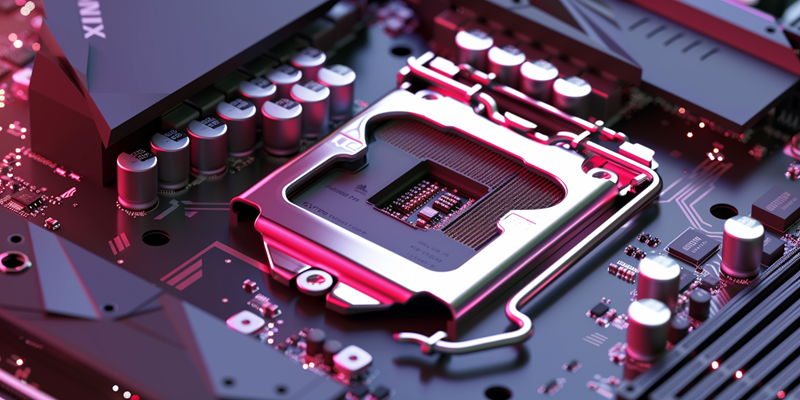The controversy surrounding Intel’s LGA 1700 socket has been a critical topic of discussion among tech enthusiasts, particularly concerning its impact on Alder Lake and Raptor Lake CPUs. The central issue identified was with its retention mechanism, which applied uneven pressure and caused warping of the CPU’s heat spreader and motherboard, compromising cooling efficiency. Intel has now proposed a compelling solution with the upcoming release of the LGA 1851 socket, featuring a new “Reduced Load ILM” (RL-ILM) design. This upgrade aims to address and mitigate the warping issues that have troubled CPU performance.
Historical Context and Problem Identification
This issue initially came to light through a hardware leak on X and rigorous analysis by Igor’s Lab. It was revealed that the uneven pressure from the LGA 1700’s retention mechanism could cause the CPU to flex over time, a revelation that stirred significant concern within the tech community. Although Intel acknowledged the problem, they refrained from issuing a recall, arguing that the performance remained within acceptable specifications and did not largely affect the general market. Nonetheless, enthusiasts and meticulous users who monitor temperature fluctuations were notably perturbed by this issue, voicing their unease in various online forums and reviews.
Despite the controversy, Intel chose not to initiate a recall, a decision that sparked further debate. By maintaining their stance that the design fell within acceptable parameters, they effectively left a segment of their user base dissatisfied, particularly those who prioritize optimal thermal performance and CPU stability. Now, Intel aims to rectify this with their new RL-ILM design in the forthcoming LGA 1851 socket, a move that may help regain the trust and confidence of their high-performance and enthusiast users.
Introduction of the RL-ILM Design
In their effort to provide a robust solution for the next-generation Arrow Lake CPUs, Intel has proposed two retention mechanism options. The first is a standard option mirroring the LGA 1700 design, and the second is the upgraded RL-ILM. The RL-ILM is specifically engineered to apply pressure more evenly, aiming to significantly enhance cooling performance by maintaining a uniformly flat CPU interface. This adjustment is crucial as it seeks to eliminate the heat spreader and motherboard warping, which were predominantly seen in the LGA 1700 design.
The RL-ILM reportedly requires at least 35 pounds of force, indicating either a slightly higher or differently distributed pressure compared to the standard version. Manufacturing costs for this upgraded mechanism are reportedly around $1, ensuring that it remains an affordable upgrade targeted at high-end motherboards. With the RL-ILM, Intel’s primary objective is to assure a uniformly even pressure distribution, thus preventing the bending and eventual warping that compromised earlier CPU socket designs. This development is particularly promising for users who demand impeccable performance and thermal management from their systems.
Industry and Market Implications
The debate over Intel’s LGA 1700 socket has been intensely scrutinized by tech enthusiasts, specifically concerning the effects on Alder Lake and Raptor Lake CPUs. The core issue highlighted was the retention mechanism, which exerted uneven pressure, leading to warping of the CPU’s heat spreader and the motherboard. This deformation adversely affected cooling performance, posing a significant drawback for many users seeking maximum efficiency from their hardware.
In response to these concerns, Intel has announced a promising solution with the forthcoming LGA 1851 socket. This new socket will incorporate a “Reduced Load ILM” (RL-ILM) design, which is engineered to distribute pressure more evenly across the CPU and the motherboard. This new design aims to significantly reduce the warping issues, thus enhancing overall thermal management and CPU performance. By addressing these key problem areas, Intel looks to restore confidence in its sockets, ensuring that users can maintain optimal performance and longevity from their CPUs. This innovation signifies Intel’s commitment to improving hardware reliability and user satisfaction.

